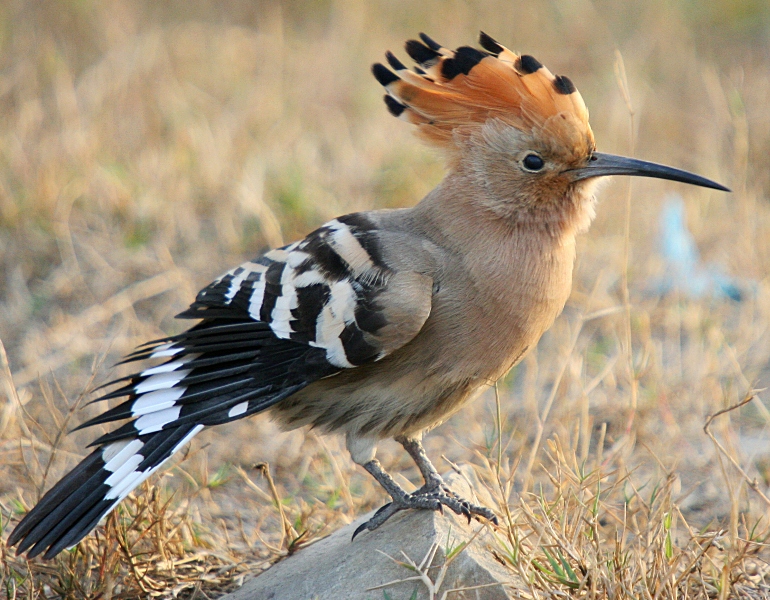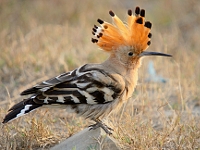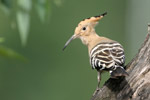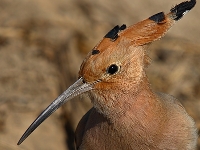| Kingdom: Animalia Phylum: Chordata Class: Aves (Birds) Order: Upupiformes Family: Upupidae |
| ||
Eurasian Hoopoe (Upupa epops) is a common resident in India. Size: 30 cm Identification: Eurasian Hoopoe is a medium-sized bird. Plumage on the chest varies from pinkish-brown to chestnut. The broad, rounded wings, back, and tail are barred black and white. The spectacular erectile crest is the same color as the head and tipped with black. The bill is long, slender, and decurved; modified musculature allows it to be opened when the bird probes for food. Hoopoes have short legs. Sexes alike. Juveniles are duller than adults, the white in the wings is tinged with cream and the crest and bill are relatively short. Distribution: A total of 9 subspecies distributed all over Asia, Africa and Europe. Three of them are found in India: U. epops epops, U. epops ceylonensis and U. epops longirostris. Food: Mainly insects, particularly larvae and pupae. Spiders, earthworms, woodlice, and centipedes are also taken, while lizards, frogs, and small snakes have been recorded. Hoopoes forage mainly in short grass and on bare soil. They walk about, constantly making short probes into the ground and sometimes pausing to insert the bill fully, opening and closing it to test or seize objects encountered. They also hawk flying insects. Habits: The hoopoe is a confiding bird and can be found near human habitation. The crest is usually held flat but raised when the bird alights or is excited. The flight is distinctive, with erratic, butterfly-like flapping. Hoopoes perch readily and can climb rough surfaces. They are diurnal, roosting in cavities at night. Hoopoes are migratory over much of their range. Most Palaearctic birds migrate to Africa and southern Asia after breeding. Races breeding in Asia make shorter-range movements to southern Asia. Local populations in Africa and southern Asia are migratory, resident, or nomadic. Nesting: Hoopoes are monogamous and nest in holes in trees, walls, cliffs, termite mounds, flat ground, and crevices between rocks. Little nest material is used, and the nest cavity is often fetid. A nest site may be used for several years. The male selects the nest site and establishes territory. Brood: Eggs are produced at a rate of one per day. Clutch size is five to eight. The incubation period is 15–18 days, only the female incubates, and hatching is asynchronous. The nestling period is 25–32 days. Young start self-feeding after six days, thereafter remaining with the parents for some weeks. Hoopoes are normally single-brooded. Nestlings defend themselves by hissing, jabbing with the bill, producing an evil-smelling secretion from uropygial gland and spraying feces. | ||




